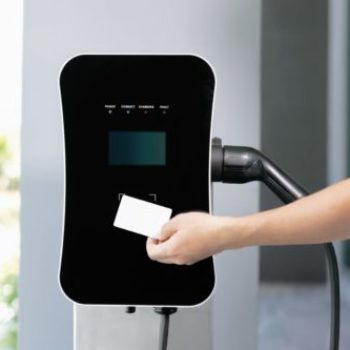As electric vehicles (EVs) become increasingly popular, apartment buildings face a unique challenge—how to effectively and fairly bill residents for EV charger usage. In this blog post, we’ll explore the intricacies of billing in strata settings, specifically addressing the point of connection for EV chargers, distinguishing between embedded and non-embedded networks, and presenting viable methods to charge residents.
Point of Connection:
Billing for EV charger usage hinges on understanding where the chargers are connected within the building’s electrical infrastructure. There are typically three scenarios:

1. Behind the Resident’s Meter:
If an EV charger is connected behind the resident’s existing apartment meter (which can be either a private or supply authority meter) then residents EV charger usage will be captured along with their apartment usage and will be invoiced under their existing arrangement.
Despite its billing simplicity, physical constraints in many buildings may make it impractical to connect an EV charger behind a resident’s electricity meter due to distances between car bays and meters. Installing an EV charger may also alter the existing Electricity Supply Agreement.
2. Behind the Common Services Meter:
In this situation, the EV chargers link to the building’s common services meter. Consequently, the expense of the electricity consumed for EV charging becomes part of the common services bill. Without a defined method for on-charging residents, the Strata Company bears the cost of EV charger usage, eventually impacting owners through their Strata fees. This scenario is applicable to both embedded and non-embedded networks.
3. Behind the ‘Master Meter’:
In an embedded network setting, there’s a possibility to install EV chargers directly behind the overall site or ‘master’ meter. In this setup, the usage of residents’ EV chargers will be reflected in the entire site’s electricity bill. The responsibility for covering these costs is contingent upon the management of the embedded network.
Similar to Scenario 2, it becomes imperative to establish a method for on-charging residents in this scenario as well.
Embedded Network or Non-Embedded Network?
An embedded network means that the building has a private metering system, often managed by a third-party operator such as Bright Connect, or the Strata Manager. In non-embedded networks, the building will have a supply authority meter for every apartment. In Western Australia, the issuer of electricity invoices helps identify the network type—Synergy for non-embedded and others for embedded networks.
Methods to On-charge Residents:
If your building falls into scenario 2 or 3, there are several options available to ensure tenants can be billed for usage of EV chargers. Some effective methods include:
Sub meters:
- Install sub-meters to measure each EV charger’s usage, facilitating accurate invoicing for residents.
- Embedded network buildings may leverage existing arrangements, while non-embedded networks require the establishment of metering procedures, potentially outsourced to a third party.
‘Pay as you go’ software:
- Implement software on EV chargers enabling real-time payment via an app, particularly suitable for communal chargers.
- Ensure bylaws govern the installation of such software, considering compatibility with different charger types.
In any scenario, transparent communication about the billing process is crucial to avoid confusion among residents.
Adding EV chargers to an apartment building involves considering numerous factors, with billing being just one aspect. Bright Connect is ready to assist in navigating these complexities; please get in touch if you’d like to discuss EV charging in your apartment building.
